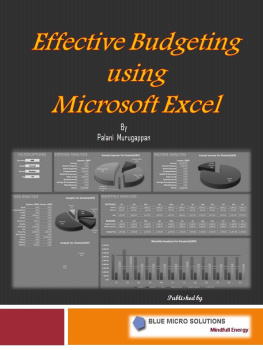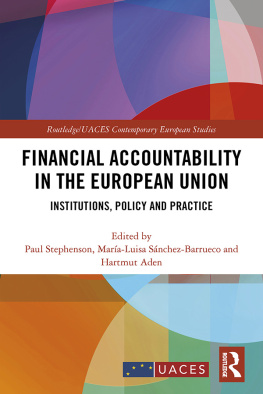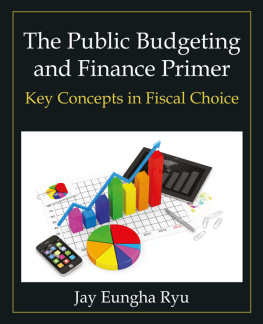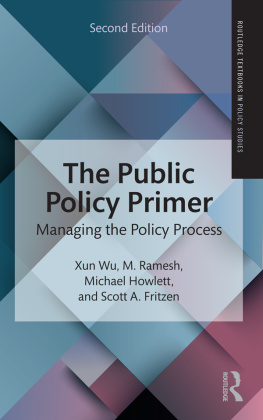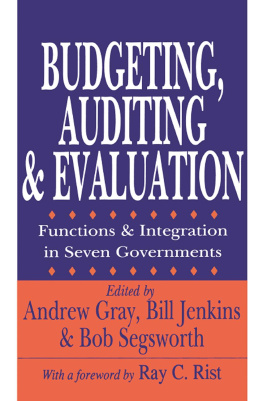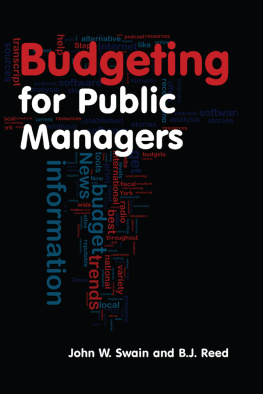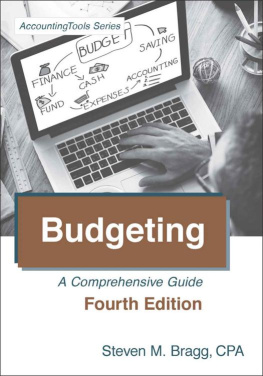Budgetary Politics in American Governments
This comprehensive book describes and analyzes the substance and politics of public budgeting at the national, state, and local levels of government. In doing so, it takes a comparative approach, illustrating the distinctiveness of budgeting at each level, as well as highlighting the features common to all three. A unifying focus is the extent to which budgetary decision makers use the budget as a central vehicle to advance their policy preferences. This fully updated sixth edition provides an extensive and thorough analysis of the causes of the Great Recession, its economic consequences, and the policy responses which pushed the boundaries of conventional monetary and fiscal policy. Also new to this edition is a chapter on the intergovernmental dimensions of public budgeting, along with boxed features highlighting hands-on vignettes of contemporary practical challenges facing budget makers at the different levels of government.
James J. Gosling is Professor of Political Science at the University of Utah.
First published 2016
by Routledge
711 Third Avenue, New York, NY 10017
and by Routledge
2 Park Square, Milton Park, Abingdon, Oxon OX14 4RN
Routledge is an imprint of the Taylor & Francis Group, an informa business
2016 Taylor & Francis
The right of James J. Gosling to be identified as author of this work has been asserted by him in accordance with sections 77 and 78 of the Copyright, Designs and Patents Act 1988.
All rights reserved. No part of this book may be reprinted or reproduced or utilized in any form or by any electronic, mechanical, or other means, now known or hereafter invented, including photocopying and recording, or in any information storage or retrieval system, without permission in writing from the publishers.
Trademark notice: Product or corporate names may be trademarks or registered trademarks, and are used only for identification and explanation without intent to infringe.
Library of Congress Cataloging in Publication Data
Gosling, James J.
Budgetary politics in American governments / by James J. Gosling.
Sixth edition.
pages cm
Includes bibliographical references and index.
1. BudgetUnited States. 2. Local budgetsUnited States.
3. Municipal budgetsUnited States. I. Title.
HJ2051.G675 2015
336.73dc232015022674
ISBN: 978-1-138-92343-0 (hbk)
ISBN: 978-1-138-92342-3 (pbk)
ISBN: 978-1-315-67371-4 (ebk)
Typeset in Times New Roman
by Sunrise Setting Ltd, Paignton, UK
For the past thirty-five years, I have taught a course on budgetary politics at the University of Wisconsin-Madison and the University of Utah. The organization of this book reflects the approach I take in the classroom. The course is comparative in its perspective, with discrete sections devoted to the substance and politics of budgeting at the national, state, and local levels. It begins with common building blocks of knowledge to give students a shared conceptual and theoretical foundation. This approach has been particularly useful in a course that draws students with different academic preparation and experience, and enables those who have little training in political science, public administration, or economics to acquire the tools necessary to understand the substance and politics of budgeting in different governmental settings. The ability to generalize and account for significant exceptions lies at the heart of the study of politics. This book aspires to reach that goal.
The book begins by introducing the subject of public budgeting: what it is, the functions it performs, the distinctive features of the budgetary process and the common constraints faced by budget makers, along with the various sources of political conflict over the budget. Attention then turns to theories of budgetary decision making in an effort to help students appreciate how and why budget participants make the choices that they do.
The previous fifth edition added a new chapter, , on the organization and structure of public budgetsthe nuts and bolts of public budgeting, so to speak. The chapter discusses elements common to all public budgets but also accounts for distinctiveness found at each level of government. It is followed by a chapter on economics and politics, added in the fourth edition, which illustrates how the economy affects budgetary decision making, and how the policy choices of economic decision makers affect the economy.
The focus then moves to the products of budgetary decision making: taxing and spending, put in the context of economic theory. Students learn about the patterns of stability and change in taxation and spending over timein the aggregate and at each level of government. They also learn about who benefits from budgetary choice and who pays for those benefits.
With this as a foundation, attention turns to an in-depth discussion of the substance and politics of budgeting at the national, state, and local levels. Although one chapter is devoted to each level, the experience of each is related to that of the others.
This new sixth edition adds a new chapter, , on fiscal federalism and intergovernmental fiscal relations, covering the intergovernmental dimensions of public budgeting.
Shifting the focus in from budget making to budget execution, the discussion covers the purposes of budget control and the means used to carry it out. Students learn that the budgetary process and its politics do not end with the legislative passage of the budget. Budgets continue to be made during the post-appropriations phase of the process through budget transfers, supplements, and controls on spending.
Chapter 1
Public Budgeting in Perspective
Budgeting lies at the heart of public policy making at all levels of government in the United States. Public budgets meet the test of the popular adage, Put your money where your mouth is; talk is cheap. In more scholarly terms, they illustrate programmed resource commitments that lay bare policy priorities and cut through political rhetoric. Budgets disclose the priorities of key institutional actors in the budget-making process and serve as instruments to measure the relative success of those actors in shaping the final budget version enacted into law.
Unlike the general legislative process, the budgetary process is action-forcing. Governmental policy makers do not decide whether to consider legislation approving a budget; they treat the need for a budget as a given. Most other legislation is much more discretionary in character; participants see a need and propose legislation to meet it. Most often, however, nothing other than their perception of need or opportunity prompts that action. In contrast, budgets expire. When they do, governments no longer have any authority under which to spend public funds. Policy makers have to approve new budgets or continue the existing ones. Typically, they try to use that opportunity to fashion budgets that advance their own policy and fiscal priorities.
Policy makers face fiscal and political constraints when trying to get what they want out of the budgetary process. Tough economic times can create serious revenue constraints when carry-forward balances prove inadequate to offset depressed tax collections. The money is just not there is a familiar refrain in times of economic downturn. In such an environment, chief executives often attempt to restrain the spending appetites of agencies by issuing budget instructions that limit agency requests, frequently giving the agencies budget targets within which their requests are expected to fall. A central budget offices instructions may even require agencies to submit alternative budget requests that fall below current funding levels.



